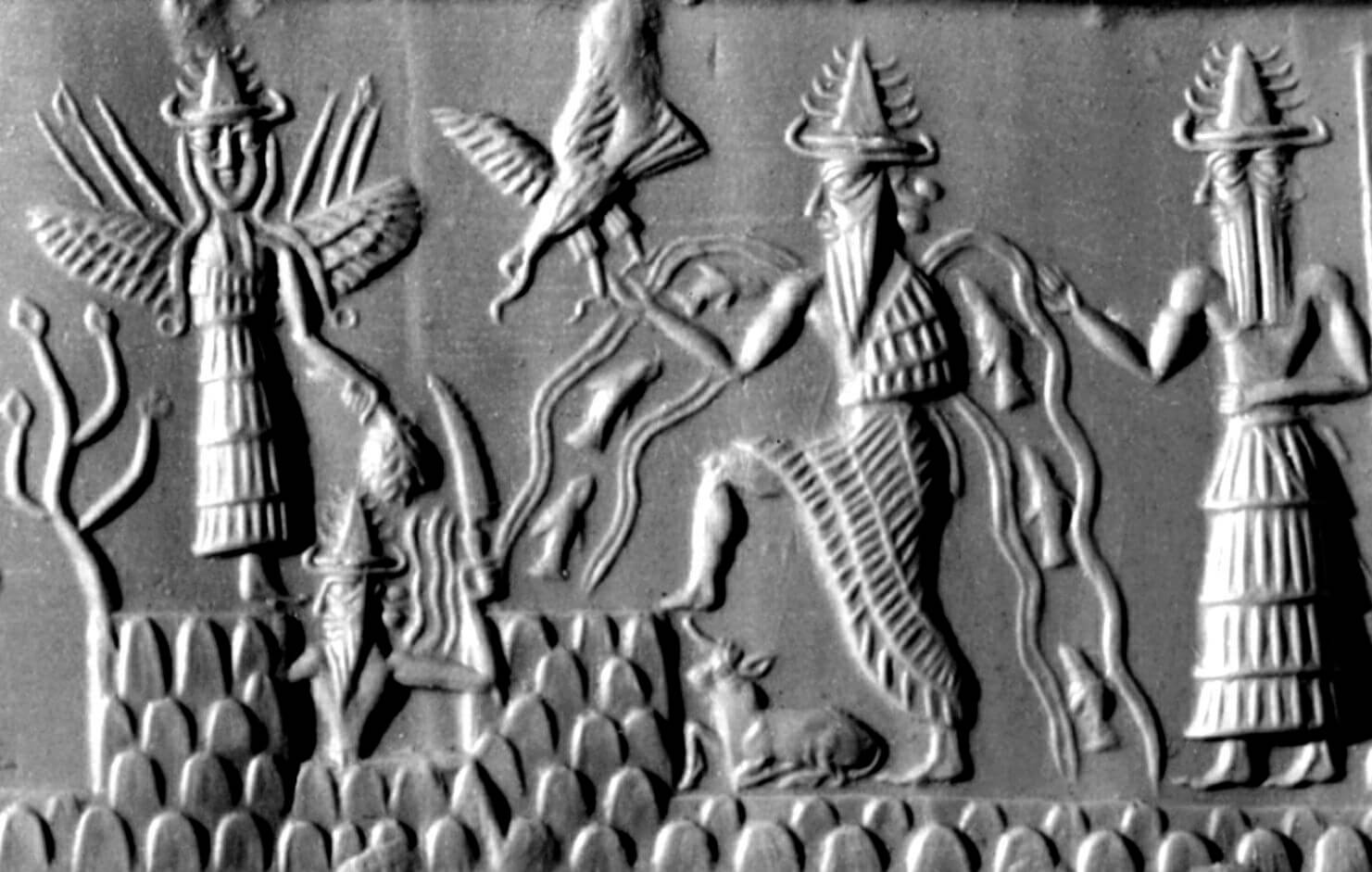
The Ant People Legend of The Hopi Tribe & Connections To The Anunnaki
The original name of the Hopi people is, Hopituh Shi-nu-mu, which means Peaceful People.
By: Robin Hale | Guest Writer
The Hopi people are one of the Native American tribes descended from the ancient peoples who lived in the south-western area of the United States, which today is called the Four Corners. One of the groups of the ancient people of the Pueblo, was the mysterious Anasazi, the Ancients, who mysteriously flourished and disappeared, between 550 and 1,300 after Christ. The history of the Hopi goes back thousands of years, making it one of the oldest living cultures in the world.
The original name of the Hopi people is, Hopituh Shi-nu-mu, which means Peaceful People. The concepts of morality and ethics are deeply rooted in Hopi traditions, and this implied a respect for all living things. Traditionally, they lived according to the laws of the Creator, Maasaw. The Hopi believed that the gods arose from the ground, in contrast to other mythologies, in which the gods came from the sky. Their mythology suggests that the Ants populated the heart of the Earth.
An independent researcher, and author of some amazing books on alien visitation, Gary David spent 30 years of his life immersed in the culture and history of the Hopi in South Dakota. According to him, they found philosophy in the essence that belongs to the constellations in the sky, which reflects the geography of the earth. This is something that could be a theory about the 3 pyramids of Giza in their relationship with the stars in the Orion belt, and there are scientific studies that support this theory. It is interesting to note that Gary David news has a similar correlation between the Hopi mesa in the southwest and the same constellation Orion.

The 3 stars that makeup Orion’s belt look brightest early in the year. And they line up with each of the pyramids. Many other different cultures gave meanings to this particular group of stars, and it is evident that the heavens have fascinated them for centuries. David thought about it too and began to study the sky and the locations of the Hopi people and their ruins.
Noting that these villages were aligned with all the major stars in the constellation of Orion and the belt of Orion. He also studied the art that was on the cave walls, and this led him to some interesting conclusions, that the Hopi people, extraterrestrial life, and the importance of the other planets in the solar system had taken so seriously. In the rocks and caves of Mesa villages, he found many hieroglyphs that match modern graphics of star and constellation patterns.

Throughout the south-western United States, we find petroglyphs (rock carvings or pictographs), cave paintings, representing entities, with thin bodies, large eyes, and bulbous heads, sometimes projecting antennae. These mysterious figures are frequently displayed in a Posture of prayer, his elbows and knees placed at right angles, similar to the bent legs of the ant. Many claims that the ant beings depicted resemble modern ideas of extraterrestrial life, and some believe that the Hopi tribe have seen and interacted with extraterrestrial beings.
One of the most intriguing Hopi legends involves the ant people, who were crucial to the Hopi’s survival, not just once, but twice.

In Hopi traditions, there are time cycles similar to Aztec mythology, and like many other mythologies. And they believed that at the end of each cycle, the gods would return. We are currently going through the fourth world, as they call it, or the next cycle. However, what is interesting in those cycles is the third, during which the Hopi talk about Flying Shields. This world of the fourth cycle, achieved an advanced civilization that was finally destroyed by God, Sotuknang – nephew of the Creator, with great floods, similar to how many other traditions describe it.

By describing how advanced the third world was, advanced “flying shields” were developed, with the ability to attack cities that were far away, and to travel rapidly between different locations in the world. The similarity to what we think of today as flying discs or even advanced aircraft is astonishing.
The so-called first world was apparently destroyed by fire, possibly some kind of volcanism, asteroid attack or coronal mass ejection from the Sun. The Second World was destroyed by ice, Ice Age glaciers, or a change of poles.
During these two global cataclysms, the virtuous members of the Hopi tribe were guided by a strangely shaped cloud during the day and a moving star at night, which led them to the god of the sky, named Sotuknang, who finally led them to the be ant, in Hopi, Anu Sinom. The Ant People then escorted the Hopi to underground caves, where they found shelter and sustenance.
In this legend, the ant people are portrayed as generous and hardworking, giving food to the Hopi when supplies are scarce, and teaching them the merits of food storage. According to the wisdom of the Native Americans, the Hopi, follow the path of peace, these words were spoken by Sotuknang, at the beginning of the Fourth World.
Look, I have washed even the footprints of your Apparition, the steps that I left you. At the bottom of the seas are all the proud cities, the flying shields, and worldly treasures corrupted by evil, and the people who did not find time to sing the praises of the Creator from the top of their hills. But the day will come, if you keep the memory and the meaning of your Appearance, when these steps emerge, again to demonstrate the truth that you speak.
In addition, according to the traditions of the Hopi, the survivors of the flood from the previous world, spread to different places under the guidance of Maasau, following his sign in the sky. When Maasau landed, he drew a petroglyph showing a lady riding a wingless, dome-shaped ship. This petroglyph symbolizes the day of purification when the true Hopi will fly to other planets in those wingless ships.
Many have said that these flying shields, or wingless ships, clearly refer to what we know today as “Unidentified Flying Objects” or UFOs.

In another part of the world, other drawings and engravings would give us the spark of theories, about another race of extraterrestrial beings, that were here, interacting, and possibly genetically modifying humanity, in the ancient land of Sumeria. These beings were the Anunnaki.

The ancient Sumerian tablets dating back 20 thousand years old, tell that the Anunnaki were a race of beings from the planet Nibiru, who created humans by taking indigenous beings from the earth and modifying their DNA with that of aliens. The Anunnaki race is believed to be the superior race originating from the heavens. And if you thought that by originating from the heavens, it was thought that through your teachings, the Sumerians learned to live in the world and take care of it until the gods of creation returned, just like the ant people of the Hopi, they were there to teach humanity about their planet and how to use its resources.
It is interesting to note that there is a linguistic link, the sky god of Babylon was called Anu. The Hopi word for ant is also Anu, and the Hopi root word was Naki, which means friends. Therefore, the Hopi Ánu-Naki, or friends of ants, may have been the same as the Sumerian Anunnaki, the beings who once came to earth from heaven. There is also a similar pronunciation of the Hopi ancestors, the Anasazi. Again we see this phrase in another belief in another part of the world. This is not to say that it proves anything, just an interesting note.

Is it coincidence, or evidence? Is it possible to suggest that the Ant People and the Anunnaki were similar beings who visited Earth in the remote past to give a helping hand to our ancestors? Is it possible that these stories interact in any way?
Whether or not there is a real connection between the Hopi of the Southwest and the ancient Sumerians, it certainly pauses, in that the creation stories were very similar. He also points out that celestial communication has been a curiosity of humanity for much longer than UFO sightings in the 20th century. As we continue to search heaven for answers in our age, it is humbling to think that the same questions may have been asked in ancient times.
About the Author
Robin is a blog writer and independent researcher whose interests cover a variety of subjects. His areas of focus include history, science, cultural studies, true crimes, unexplained phenomena, and mysterious historical events. In addition to writing, Robin is a self-taught digital artist and a successful web developer.
